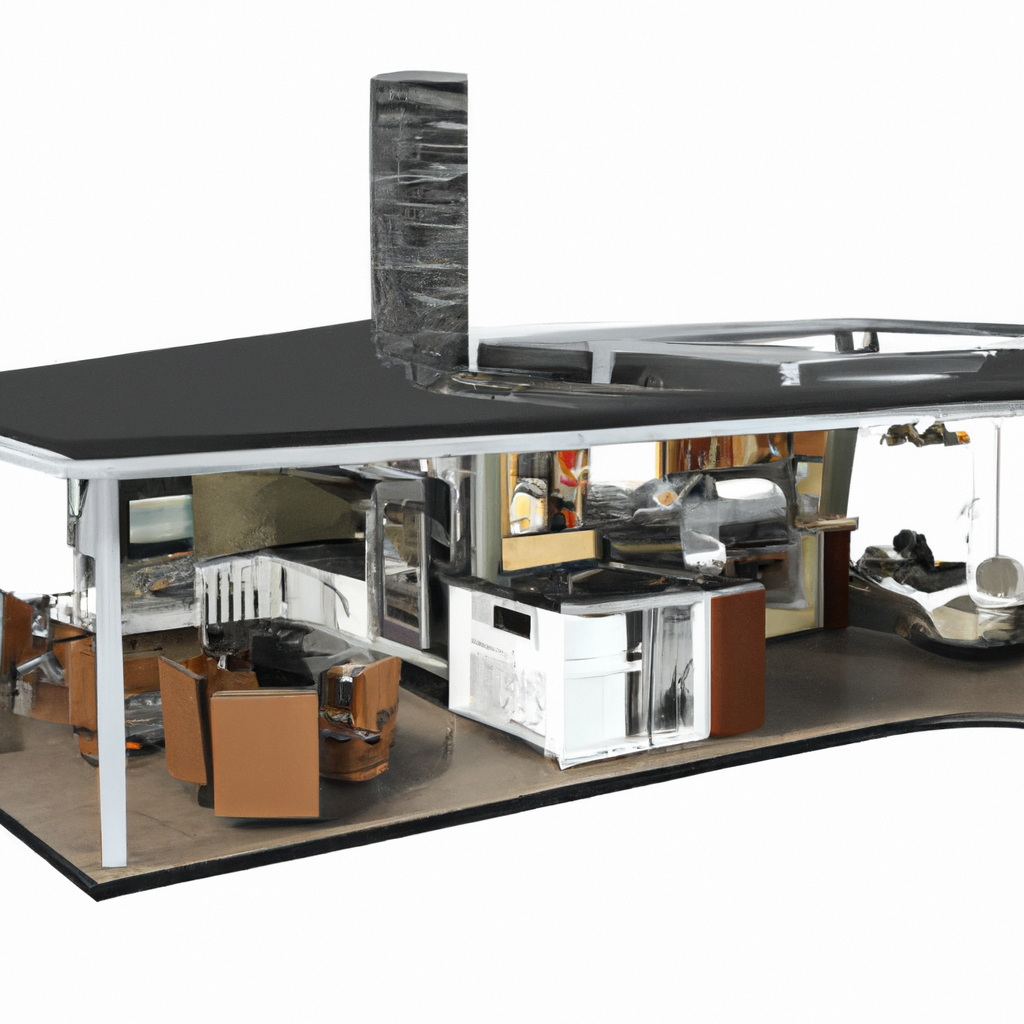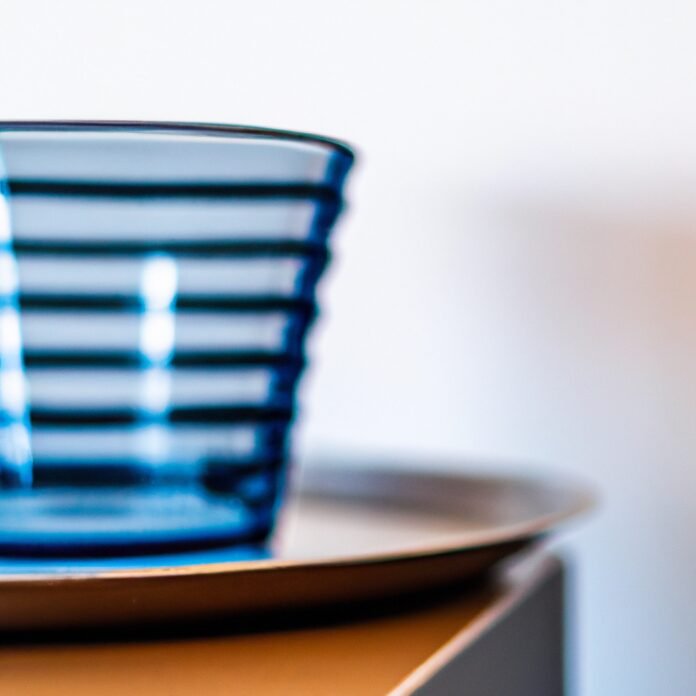Step back in time and immerse yourself in the captivating world of Mid-Century Modern design, where sleek lines, iconic silhouettes, and a touch of nostalgia collide. In this article, we invite you to explore the enchanting design aesthetics of vintage Americana, as we delve into the timeless allure of Mid-Century Modern. From Eames chairs to atomic ranch houses, prepare to embark on a journey that celebrates an era where artistic innovation met the everyday, reimagining the way we perceive and experience interior design. So, dust off your record player, sip on a cocktail, and let us unravel the secrets behind the enduring charm of Mid-Century Modern – a design movement that continues to shape our present with its resolute influence from the past.
1. Unveiling the Timeless Beauty: The Allure of Mid-Century Modern Design
Mid-century modern design is a testament to the enduring beauty of simplicity and functionality. Defined by clean lines, organic shapes, and a focus on practicality, this design movement emerged in the middle of the 20th century and continues to captivate us even today.
One of the key characteristics of mid-century modern design is its ability to seamlessly blend with various architectural styles. It effortlessly complements both contemporary and traditional settings, making it a versatile and timeless choice for any space.
The allure of mid-century modern design lies in its ability to create a harmonious balance between form and function. Every element, from the furniture to the lighting, is meticulously designed to serve a purpose while exuding a sense of aesthetic pleasure. The emphasis on clean, uncluttered spaces creates an atmosphere of tranquility and encourages a calming, stress-free environment.
Another fascinating aspect of mid-century modern design is its focus on bringing nature indoors. The incorporation of natural materials such as wood, glass, and stone helps to establish a deep connection with the surrounding environment. Floor-to-ceiling windows and open-concept layouts allow ample natural light to flood the space, blurring the boundaries between the interior and exterior and inviting a sense of serenity and peace.
The beauty of mid-century modern design lies in its ability to transcend time and trends, remaining eternally relevant and sought-after. Its minimalistic yet striking aesthetic continues to inspire contemporary designers, architects, and homeowners alike. With its timeless appeal, it is safe to say that mid-century modern design is here to stay, captivating generations to come with its irresistible allure.
2. Intertwining Nostalgia and Innovation: Exploring the Unique Aesthetics of Mid-Century Modern
Mid-century modern design is an artistic movement that emerged in the post-World War II era, capturing the essence of innovation and nostalgia in a captivating way. This unique aesthetic is recognized for its clean lines, minimalist approach, and bold colors that set it apart from other design styles.
One of the key characteristics of mid-century modern design is its ability to intertwine nostalgia and innovation seamlessly. It blends elements from the past with forward-thinking designs, creating a harmonious balance between old and new. The designers of this era drew inspiration from the simplicity and functionality of pre-war design, as well as the new materials and technologies available to them.
The convergence of past and future is evident in the furniture and decor of mid-century modern design. Organic shapes and materials, such as wood and leather, pay homage to traditional craftsmanship, while sleek forms and industrial materials, like steel and glass, reflect the progressive spirit of the time. The result is a visual language that tells a story of both history and progress.
An important aspect of mid-century modern design is its focus on function. Furniture and household items were designed with practicality in mind, stripped of unnecessary ornamentation. This emphasis on functionality allowed for a more efficient use of space, making mid-century modern design highly sought after for smaller living spaces.
In addition to its clean lines and functional appeal, the mid-century modern aesthetic is also known for its bold colors. Vibrant hues, such as mustard yellow, avocado green, and vibrant orange, bring an element of fun and playfulness to the design. Whether it is a statement chair or a retro-inspired wallpaper, these pops of color inject energy into any space.
Mid-century modern design has stood the test of time, with its unique aesthetics continuing to inspire contemporary designers today. The marriage of nostalgia and innovation remains a captivating aspect of this design style, creating a visual language that resonates with people across generations. Whether you are a fan of its clean lines, functional appeal, or bold colors, mid-century modern design offers a timeless allure that is as relevant today as it was in the past.
3. Captivating the Essence of Vintage Americana: Rediscovering the Design Trends of Mid-Century Modern
When it comes to design trends, few eras have left a more lasting impact than the mid-century modern style that emerged in America during the 1940s to 1960s. This timeless aesthetic, often referred to as “vintage Americana,” continues to captivate art and design enthusiasts worldwide. With its clean lines, organic forms, and iconic furniture pieces, mid-century modern design seamlessly blends functionality with elegance.
One of the standout features of mid-century modern design is its emphasis on simplicity and minimalism. The idea was to create open, airy spaces that felt harmonious and uncluttered. This concept can be seen in the straight, unadorned lines of furniture, such as the iconic Eames chair or the tulip table. These pieces, characterized by their sleekness and functionality, have become timeless classics that continue to inspire modern designers.
Another defining aspect of mid-century modern design is the use of natural materials. Wood, specifically teak and walnut, takes center stage in furniture construction. These natural elements bring warmth and depth to any space, and their high-quality craftsmanship ensures durability that has lasted for decades. Mixing wood with other materials like metal and plastic adds a touch of contrast and industrial appeal.
To truly capture the essence of vintage Americana, one must also pay attention to colors and patterns. Mid-century modern design makes bold use of color, favoring saturated hues like burnt orange, avocado green, and vibrant blues. These colors add personality and character to the room, creating a sense of playfulness and nostalgia.
When it comes to patterns, geometric shapes take the spotlight. From the famous atomic patterns to bold stripes and abstract designs, mid-century modern embraces graphic elements in a way that still feels fresh today. Using these patterns sparingly through accessories, wallpapers, or rugs can instantly transport any space back to the golden era of design.
4. Embracing the Golden Age: How Mid-Century Modern Design Resonates with Contemporary Tastes
Mid-century modern design, with its sleek lines, bold colors, and minimalist aesthetic, continues to captivate modern-day tastes. This iconic design movement, which emerged in the post-World War II era, has stood the test of time and remains as relevant today as it was during its heyday in the 1950s and 1960s.
One of the main reasons behind the enduring popularity of mid-century modern design is its ability to seamlessly blend with contemporary styles and sensibilities. Its clean, uncluttered look provides a perfect canvas for mixing and matching with other design elements. These timeless pieces effortlessly complement both traditional and modern interiors, infusing spaces with a sense of sophistication and simplicity.
Mid-century modern furniture is prized for its attention to detail and craftsmanship. From the iconic Eames lounge chair to the sculptural forms of Arne Jacobsen, these designs have become timeless classics. The emphasis on quality materials and functionality make these pieces as functional today as they were decades ago. This combination of form and function continues to resonate with contemporary tastes, inspiring designers and homeowners alike.
Furthermore, mid-century modern design brought a sense of approachability and informality to the world of interior design. As society continues to prioritize comfort and ease in our homes, the laid-back charm of mid-century modern pieces perfectly matches this desire. Whether it’s a cozy lounge chair or a sleek dining table, these designs convey a sense of relaxed elegance that fits seamlessly into contemporary living spaces.
The versatility of mid-century modern design also contributes to its continued popularity. Its iconic elements can be effortlessly integrated into various design styles, whether you prefer a more rustic, bohemian aesthetic or a clean, minimalist approach. This flexibility allows individuals to personalize their spaces while paying homage to the design ideals of the past.
As we conclude our journey into the enchanting world of mid-century modern design, we emerge with a newfound appreciation for the timeless allure of vintage Americana. With its clean lines, minimalist forms, and functional yet stylish aesthetic, this design movement continues to captivate our imaginations and shape our perceptions of interior décor.
Throughout this article, we have explored the core principles that define mid-century modern design – a celebration of simplicity, functionality, and a seamless blend between indoor and outdoor spaces. We have delved into the origins of this movement, tracing its roots back to post-World War II America, where a yearning for renewal and a fresh start gave birth to a design revolution.
As we meandered through the iconic furniture pieces of the era – the Eames Lounge Chair, the Saarinen Tulip Table, and the Noguchi Coffee Table – we couldn’t help but be drawn to their enduring charm. Each piece, meticulously crafted and designed with utmost care, embraces the ethos of mid-century modernism, seamlessly blending form and function like a well-choreographed dance.
But it is not just the furniture that captures our attention. Mid-century modern design extends beyond the realm of interiors, permeating popular culture and influencing countless aspects of our daily lives. From brightly colored appliances in kitchens to soaring architectural marvels, this movement transformed the aesthetics of vintage Americana into a vibrant tapestry that continues to inspire.
Yet, as we celebrate the legacy of mid-century modern, it is important to recognize its evolution into a relevant and thriving design philosophy today. With modern reinterpretations, contemporary designers pay homage to this iconic era while infusing it with a fresh perspective, breathing new life into the classic principles that underpin it.
So, as we bid farewell to the captivating world of mid-century modern, we invite you to embrace its design aesthetics with open arms. Let the timeless allure of vintage Americana permeate your own living spaces, creating an oasis of sophisticated simplicity and offering a nod to an era that shaped the design landscape as we know it today.
In a world that constantly changes, mid-century modern design stands the test of time, reminding us of the inherent beauty in clean lines, functional forms, and a touch of nostalgia. So, go forth and let the spirit of vintage Americana inspire your own design journey – where the past meets the present, and where the ethos of mid-century modern lives on.
